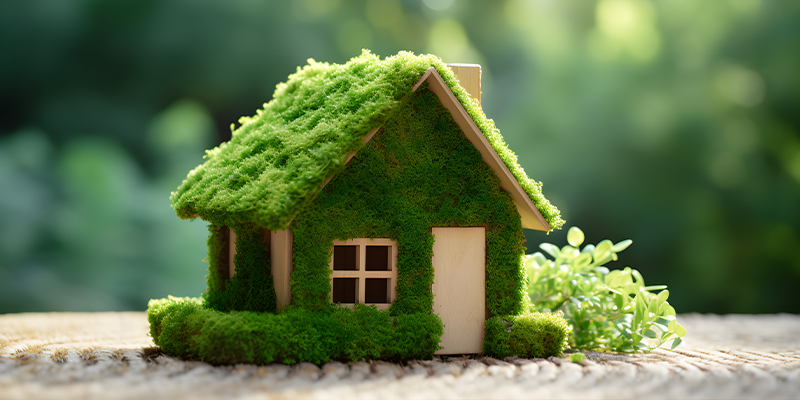The Advantages of Green Building Practices for a Sustainable Future
Did you know that 80% of North Americans feel it’s extremely important to recycle when possible? They agree that a lack of recycling programs and services are a top barrier to recycling. In an age where environmental concerns are mounting, we need to approach green building, deconstruction, and remodeling with the environment in mind. At Harvest Eco Salvage, we recognized this back in 1999. Since then, we’ve kept millions of tons of usable and recyclable building materials out of our landfills.
Today, we continue to offer property owners a more sustainable future through green building and deconstruction practices during home remodels or tear-downs. Our green building practices go beyond the basics. We prioritize identifying, salvaging, recycling, and repurposing building and site materials from the very beginning start of each project. This significantly lessens the environmental impact during the construction process, benefitting not only our communities, but also the homeowner. Each property owner is granted a Non-Cash Charitable Tax Deduction from Harvest Eco-Salvage for the materials recovered. Let’s delve into how incorporating green deconstruction practices can contribute to a healthier planet.
Minimizing Landfill Waste:
Traditional demolition generates vast amounts of waste, often ending up in landfills, causing pollution and environmental harm. Green building and deconstruction takes a thoughtful approach to material disposal. By carefully separating salvageable from non-salvageable materials, a significant portion is diverted away from landfills. This not only reduces the need for new landfill space, but also lessens the environmental hazards associated with construction waste.
We’re able to collect a wide variety of materials from each project – from all doors and windows to appliances and hardware. Harvest Eco-Salvage includes the property’s structural elements. That means we can collect and include all the following in your IRS-qualified Real Estate Appraisal:
All asphalt and concrete, including patios, basements, and footings
All metals
Flooring materials (hardwood, tile, carpet, etc.)
Cabinets and countertops
Hardware (hinges, knobs, handles, etc.)
HVAC units and components
Plumbing fixtures and piping
Electrical fixtures and systems
Lighting (indoor and outdoor), including switches, controls, timers, etc.
Framing lumber and heavy timber beams
Siding and trim
Brick, stone, and masonry elements
Architectural features and millwork
Solar panels
Pools
Fences and gates
Tennis and sports courts
Outdoor BBQ and fireplaces
Landscape irrigation components, including valves, timers, backflow preventers
Preserving Resources:
Salvaging and repurposing materials during the deconstruction process helps conserve valuable resources. Reuse materials like wood, doors, windows, and fixtures decreases the demand for fresh resources. This lowers the need for energy-intensive manufacturing processes. This conservation effort plays a crucial role in mitigating deforestation as the consumption of forest products continues to increase globally.
The US Environmental Protection Agency reports that “the manufacturing of construction materials and products accounts for 11% of annual global [greenhouse] emissions.”
When green building practices create more materials for future projects, we minimize the carbon footprint tied to manufacturing and promote a more sustainable use of Earth’s finite resources.
The Global Alliance for Building and Construction found in 2019 that “building construction emissions – those related to the manufacturing of building materials – amounted to a […] total of 39% of global energy-related emissions.”
Energy Efficiency:
Green building and deconstruction practices align with the principles of energy efficiency. Instead of relying on heavy machinery and energy-intensive demolition methods, these practices prioritize careful disassembly. This not only reduces energy consumption during teardowns but also preserves the embodied energy within salvaged materials. Reusing materials that have already undergone manufacturing significantly decreases the overall energy expenditure associated with construction projects. Harvest Eco-Salvage diverted 160 million tons of building material from landfills in 2024 alone.
Supporting the Circular Economy:
Green deconstruction fosters the idea of a circular economy by creating a closed-loop system for building materials. Salvaged materials are not discarded but find new life in other construction projects. This closed-loop approach reduces the need for continuous extraction and processing of raw materials. It implicitly promotes a more sustainable and regenerative system.
Incorporating green deconstruction practices into construction projects is about more than just taking structures apart. It’s about constructing a sustainable and environmentally conscious future.
By choosing to salvage, recycle, and repurpose building materials, we contribute to
minimizing waste,
preserving resources,
improving energy efficiency,
and supporting the circular economy.
The widespread adoption of these practices will undoubtedly pave the way for a greener, more sustainable construction industry—one that prioritizes the well-being of the environment and future generations.
Contact us if you’re interested in learning more about the power of green deconstruction.
Learn more about our chapters in Arizona; Northern California; Southern California; Austin, Texas; Denver, Colorado; and the Mid-Atlantic area covering Maryland, Virginia, and District of Columbia.

